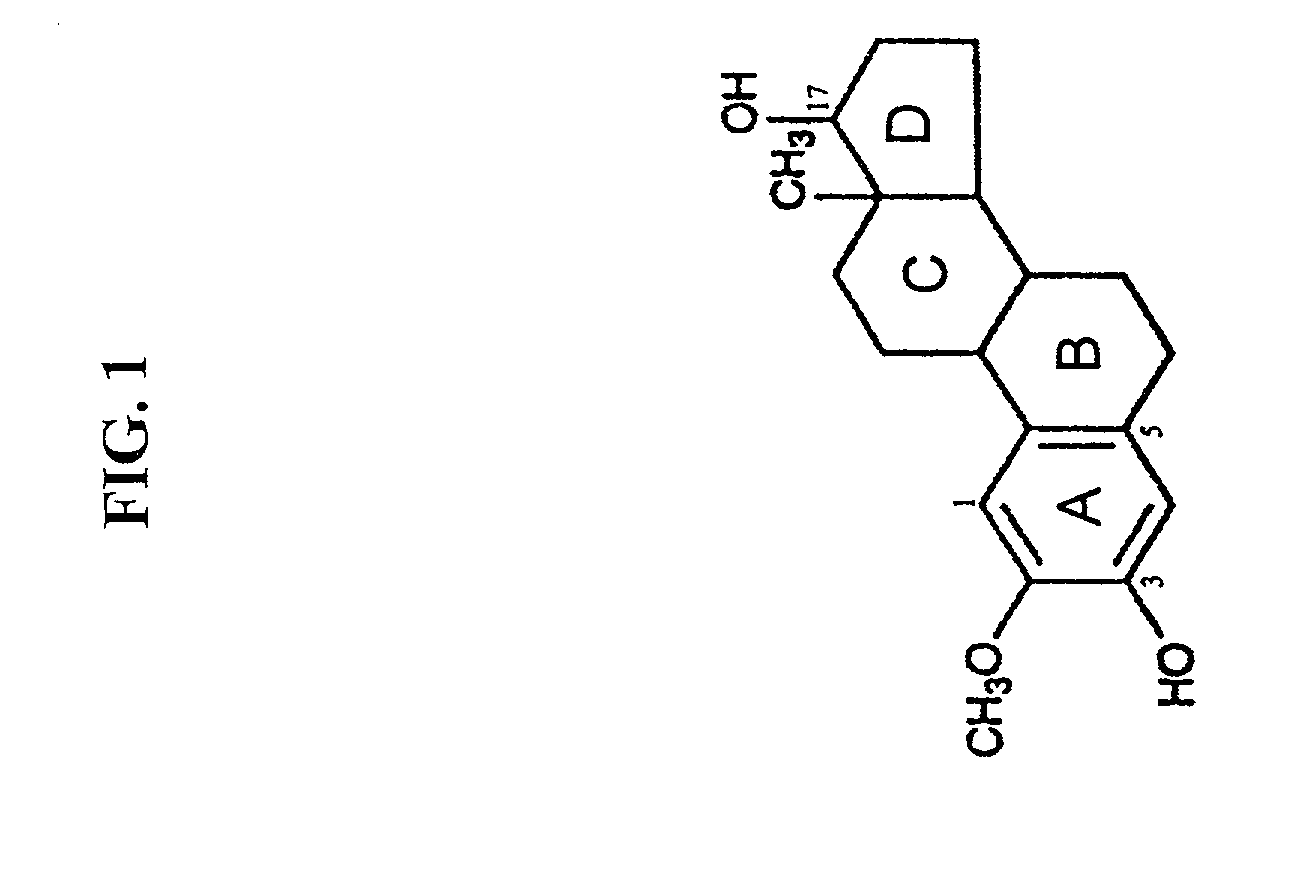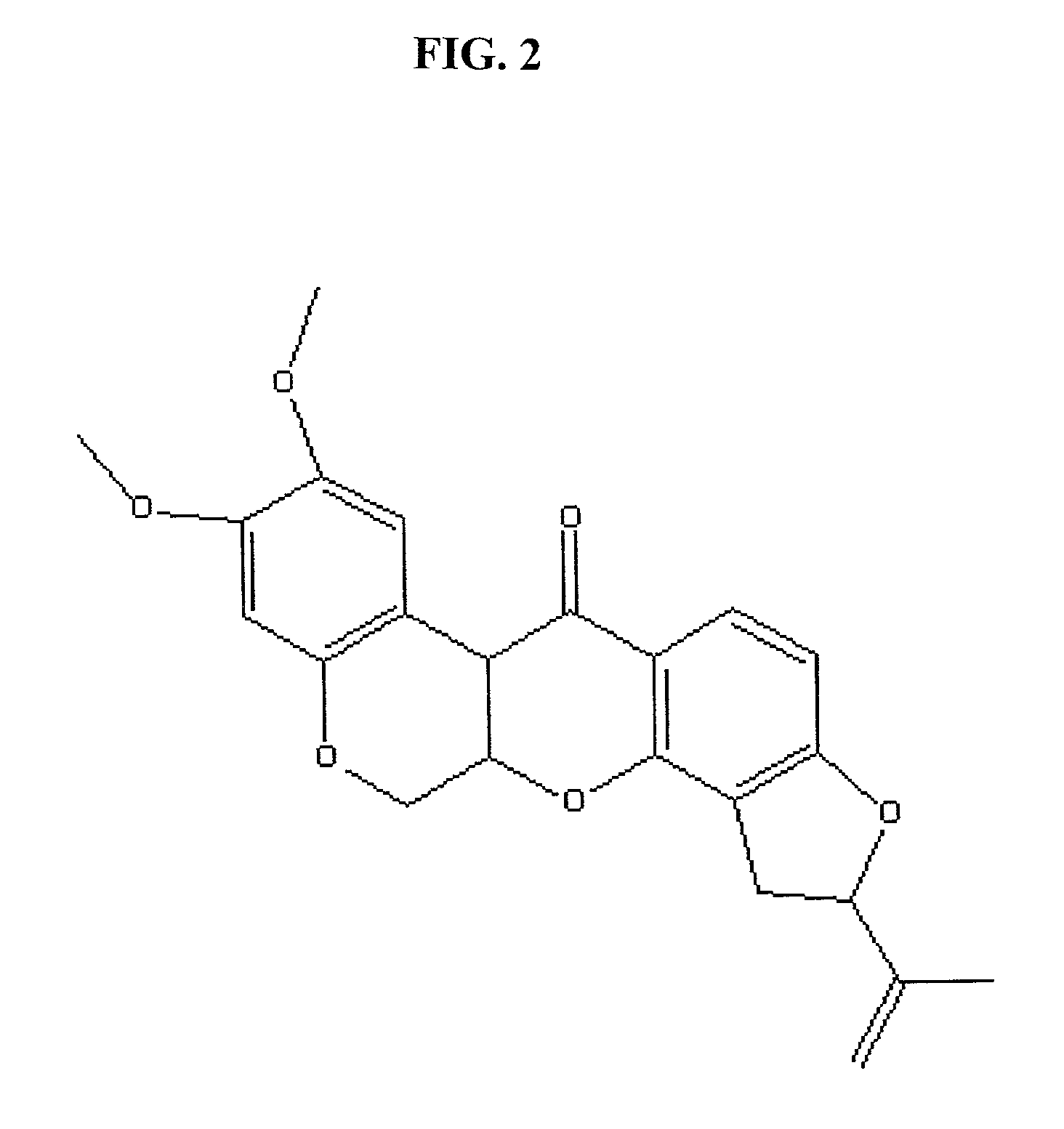Cancer therapeutics involving the administration of 2-methoxyestradiol and an agent that increases intracellular superoxide anion
a technology of superoxide anion and chemotherapy, which is applied in the direction of anti-noxious agents, drug compositions, peptide/protein ingredients, etc., can solve the problems of limited cancer therapy potential, high toxicity of chemicals, and small amount of superoxide anion formed during metabolic reduction of oxygen
- Summary
- Abstract
- Description
- Claims
- Application Information
AI Technical Summary
Benefits of technology
Problems solved by technology
Method used
Image
Examples
example 1
[0196] Methods
[0197] Assay of SOD Activity
[0198] A spectrophotometric assay was used to determine the effect of 2-methoxyestradiol (2-ME) on SOD activity in vitro with purified enzymes (bovine CuZnSOD from Boehringer Mannheim; human CuZnSOD and E. coli MnSOD from Sigma). The reactions contained 2.5 ml of 50 mM Na.sub.2CO.sub.3, 0.1 ml of 3 mM xanthine, 0.1 ml of 3 mM EDTA, and 0.1 ml of 0.8 mM XTT (3'-(1-[phenylamino-carbonyl]3,4-tetrazolium)-bis(4-methoxy-6-nitro)benze-ne-sulfonic acid hydrate), and the indicated concentrations of SOD and 2-ME. Xanthine oxidase (0.1 ml, 64 mU / ml) was added to start the reaction. After incubation at 24.degree. C. for 30 min, the absorbance at 470 nm was measured. The relative activity (RA) of SOD was calculated by the following formula:
RA=[1-(c-b) / (a-b)].times.100%
[0199] where a is the absorbance of reaction without SOD, b is the absorbance of reaction with SOD but without 2-ME, c is the absorbance of reaction with SOD in the presence of 2-ME. All v...
example 2
[0221] Based on our discovery that Superoxide dismutase (SOD) is a key target of 2-methoxyestradiol (2-ME) in causing apoptosis of cancer cells, we have further designed the following combination strategies to enhance anticancer activity.
[0222] The first strategy involved a pharmacological approach to increase the generation of intracellular O.sub.2.sup.- by rotenone in combination with 2-ME to further block the elimination of O.sub.2.sup.-, and thus enhance the free radical-mediated damage to the cells. This strategy is shown in FIG. 23. Rotenone, an inhibitor of mitochondrial enzyme complex I, inhibits the transport of electron and cause a leak of electron from complex I to form O.sub.2.sup.-. We have established a flow cytometry-based method to quantitate cellular O.sub.2.sup.- contents. As shown in FIG. 24, incubation of HL-60 cells with 0.25 .mu.M of 2-ME or rotenone led to an increase of cellular O.sub.2.sup.- Combination of both compounds caused a further O.sub.2.sup.- accumu...
example 3
[0226] 2-Methoxylestradiol (2-ME) was combined with other agents for cancer therapeutics. These data support the original mechanism-based combination strategies and provide specific combinational therapies that are effective in cancer treatment. The data described herein were obtained in experiments with primary leukemia cells isolated from blood samples obtained from patients with chronic lymphocytic leukemia (CLL).
[0227] Combination with Sodium Arsenate.
[0228] Arsenic trioxide is known to possess anticancer activity and has been approved for use in clinical treatment of certain type of leukemia. Induction of free radical generation in the cells is thought to contribute to its cytotoxic activity against cancer cells. It is hypothesized that combination of arsenate (to enhance cellular free radicals) and 2-ME (to inhibit the elimination of superoxide radicals) would increase their anticancer activity. As shown in FIGS. 39-40, the combination of arsenate and 2-ME substantially increa...
PUM
| Property | Measurement | Unit |
|---|---|---|
| temperatures | aaaaa | aaaaa |
| wavelength | aaaaa | aaaaa |
| wavelength | aaaaa | aaaaa |
Abstract
Description
Claims
Application Information
 Login to View More
Login to View More - R&D
- Intellectual Property
- Life Sciences
- Materials
- Tech Scout
- Unparalleled Data Quality
- Higher Quality Content
- 60% Fewer Hallucinations
Browse by: Latest US Patents, China's latest patents, Technical Efficacy Thesaurus, Application Domain, Technology Topic, Popular Technical Reports.
© 2025 PatSnap. All rights reserved.Legal|Privacy policy|Modern Slavery Act Transparency Statement|Sitemap|About US| Contact US: help@patsnap.com



